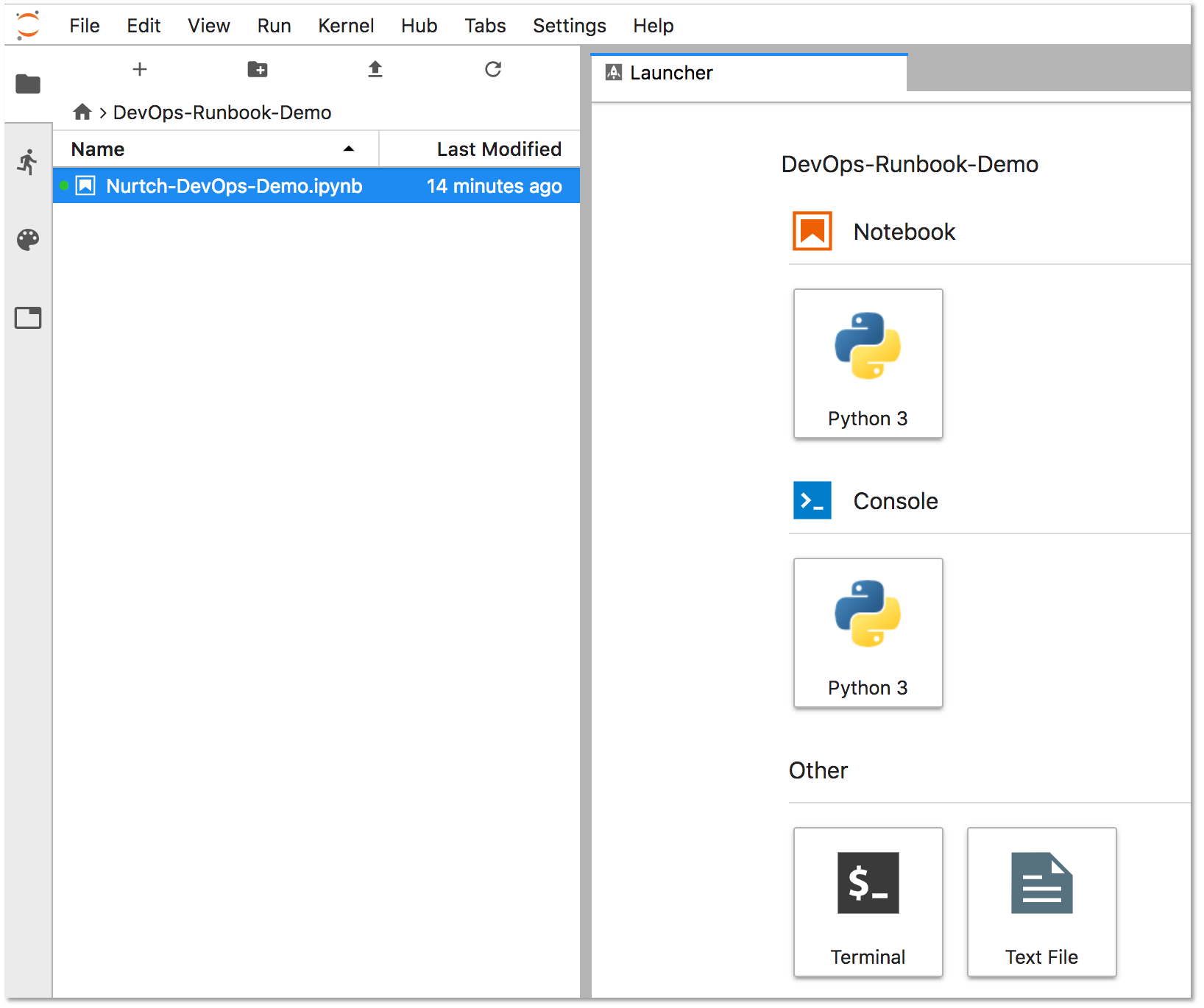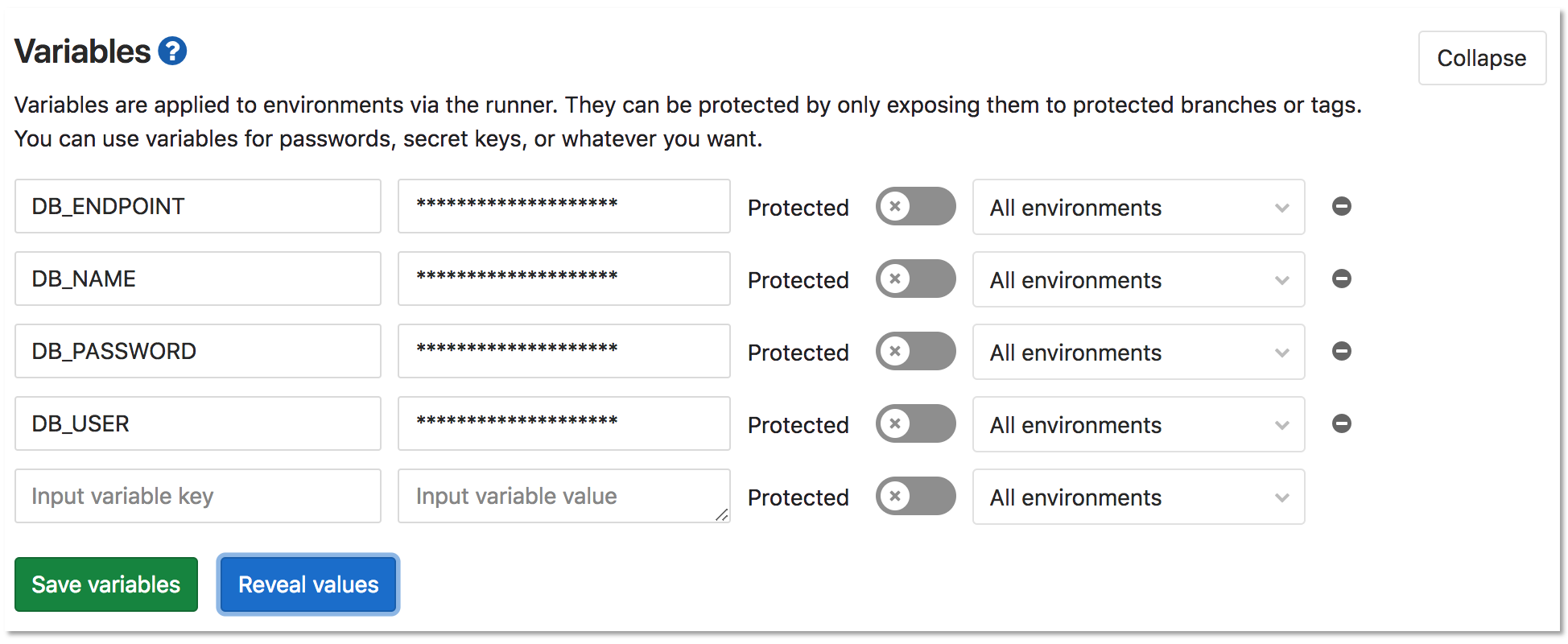6 KiB
Runbooks
Runbooks are a collection of documented procedures that explain how to carry out a particular process, be it starting, stopping, debugging, or troubleshooting a particular system.
Overview
Historically, runbooks took the form of a decision tree or a detailed step-by-step guide depending on the condition or system.
Modern implementations have introduced the concept of an "executable runbooks", where along with a well define process, operators can execute code blocks or database queries against a given environment.
Nurtch Executable Runbooks
Introduced in GitLab 11.4.
The JupyterHub app offered via GitLab’s Kubernetes integration now ships with Nurtch’s Rubix library, providing a simple way to create DevOps runbooks. A sample runbook is provided, showcasing common operations.
Watch this video for an overview of how this is acomplished in GitLab!
Requirements
To create an executable runbook, you will need:
- Kubernetes - A Kubernetes cluster is required to deploy the rest of the applications. The simplest way to get started is to add a cluster using GitLab's GKE integration.
- Helm Tiller - Helm is a package manager for Kubernetes and is required to install all the other applications. It is installed in its own pod inside the cluster which can run the helm CLI in a safe environment.
- Ingress - Ingress can provide load balancing, SSL termination, and name-based virtual hosting. It acts as a web proxy for your applications.
- JupyterHub - JupyterHub is a multi-user service for managing notebooks across a team. Jupyter Notebooks provide a web-based interactive programming environment used for data analysis, visualization, and machine learning.
Nurtch
Nurtch is the company behind the Rubix library. Rubix is an open-source python library that makes it easy to perform common DevOps tasks inside Jupyter Notebooks. Tasks such as plotting Cloudwatch metrics and rolling your ECS/Kubernetes app are simplified down to a couple of lines of code. Check the Nurtch Documentation for more information.
Configure an executable runbook with GitLab
Follow this step-by-step guide to configure an executable runbook in GitLab using the components outlined above and the preloaded demo runbook.
1. Add a Kubernetes cluster
Follow the steps outlined in Adding and creating a new GKE cluster via GitLab to add a Kubernetes cluster to your project.
2. Install Helm Tiller, Ingress, and JupyterHub
Once the cluster has been provisioned in GKE, click the "Install" button next to the "Helm Tiller" app.
Once Tiller has been installed successfully, click the "Install" button next to the "Ingress" app.
Once Ingress has been installed successfully, click the "Install" button next to the "JupyterHub" app.
3. Login to JupyterHub and start the server
Once JupyterHub has been installed successfully, navigate to the "Jupyter Hostname" url presented and click "Sign in with GitLab". Authentication is automatically enabled for any user of GitLab server via OAuth2. This will redirect to GitLab in order to authorize JupyterHub to use your GitLab account. Click "Authorize".
Once the application has been authorized you will taken back to the JupyterHub application. Click "Start My Server"
The server will take a couple of seconds to start.
4. Configure access
In order for the runbook to access your GitLab project, you will need to enter a GitLab Access Token as well as your Project ID in the "Setup" section of the demo runbook.
Double-click on the "DevOps-Runbook-Demo" folder located on the left panel.
Double-click on the "Nurtch-DevOps-Demo.ipynb" runbook
The contents on the runbook will be displayed on the right side of the screen. Under the "Setup" section, you will find
entries for both your PRIVATE_TOKEN and your PROJECT_ID. Enter both these values, conserving the single quotes as follows:
PRIVATE_TOKEN = 'abcdef123456'
PROJECT_ID = '1234567'
Update the VARIABLE_NAME on the last line of this section to match the name of the variable you are using for you
access token. In this example our variable name is PRIVATE_TOKEN.
VARIABLE_VALUE = project.variables.get('PRIVATE_TOKEN').value
5. Configure an operation
For this example we'll use the "Run SQL queries in Notebook" section in the sample runbook to query a postgres database. The first 4 lines of the section define the variables that are required for this query to function.
%env DB_USER={project.variables.get('DB_USER').value}
%env DB_PASSWORD={project.variables.get('DB_PASSWORD').value}
%env DB_ENDPOINT={project.variables.get('DB_ENDPOINT').value}
%env DB_NAME={project.variables.get('DB_NAME').value}
Create the matching variables in your project's Settings >> CI/CD >> Variables
Back in Jupyter, click the "Run SQL queries in Notebook" heading and the click the "run" button. The results will be displayed in-line as follows:
You can try other operations such as running shell scripts or interacting with a kubernetes cluster. Visit the Nurtch Documentation for more information.








